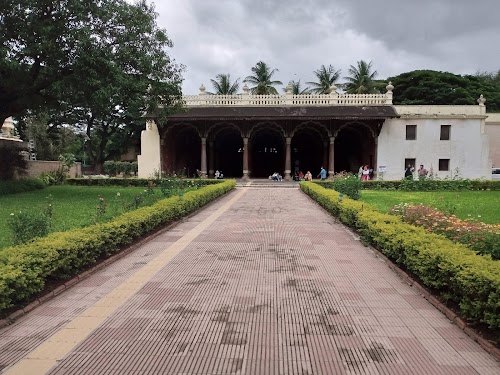
Tipu Sultan's Summer Palace
Bengaluru, India
- Admire the intricate carvings
- Explore the palace architecture
- Learn about Tipu Sultan's reign
- Stroll through the palace gardens
- Take photos of the beautiful frescoes
Known for:
Description:
Tipu Sultan's Summer Palace is a two-storied ornate wooden structure located in Bangalore, India. The palace is an example of Indo-Islamic architecture and features intricate carvings, pillars, and arches. The ground floor housed the administrative offices and the upper floor served as the royal residence. The walls and ceilings are adorned with colorful frescoes depicting historical events and floral patterns. The palace is surrounded by a beautiful garden, offering a serene atmosphere.
History:
Tipu Sultan's Summer Palace was built by Kempegowda II, the founder of Bangalore, in the 16th century. Hyder Ali further extended it. It served as the summer residence of Tipu Sultan, the ruler of Mysore, in the late 18th century. The palace was constructed using teakwood, mortar, stone and plaster. After Tipu Sultan's death in 1799, the palace was used by the British as an administrative office before being declared a protected monument. Today, it stands as a historical landmark showcasing the rich heritage of the region.